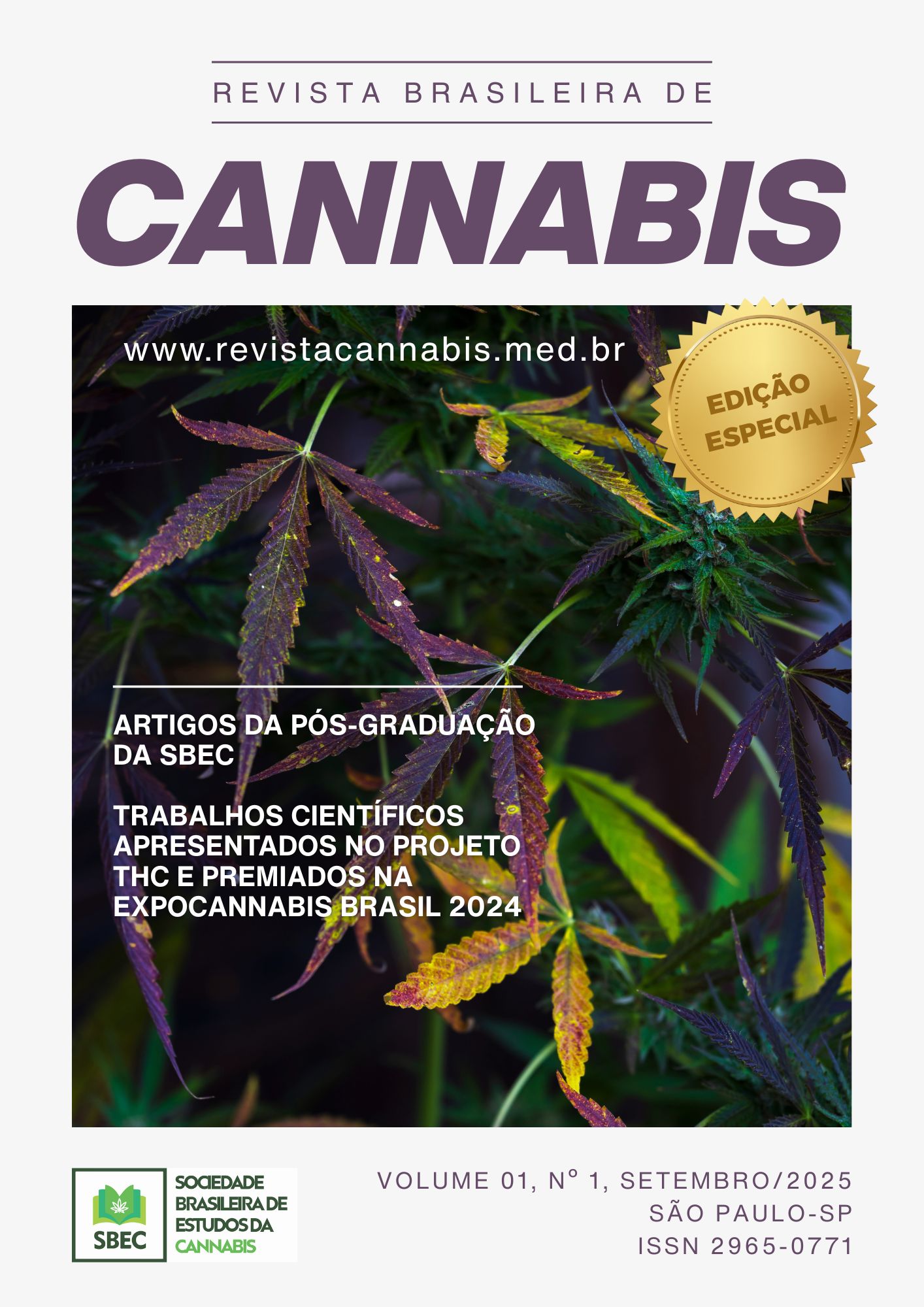CÂNHAMO (CANNABIS SATIVA L.) COMO PLANTA FITORREMEDIADORA: UMA REVISÃO DE LITERATURA
DOI:
https://doi.org/10.58731/2965-0771.2025.103Abstract
Soil contamination by heavy metals is a growing environmental challenge, particularly in tropical regions. Phytoremediation emerges as a viable and sustainable alternative to conventional techniques. This literature review analyzes studies published between 2010 and 2024 on the use of industrial hemp (Cannabis sativa L.) in remediating soils contaminated with lead (Pb), cadmium (Cd), and zinc (Zn). The results show that the plant exhibits high efficiency in absorbing and tolerating these metals, especially when associated with management practices such as biochar application, nitrogen fertilization, and successive planting cycles. In tropical soils, its adaptability to water stress, acidity, and low fertility enhances its performance. Beyond ecological effectiveness, hemp has economic value through the production of biomass for construction materials, bioenergy, and biocomposites. However, the absence of specific regulations for its technical cultivation in Brazil and the lack of field studies limit its large-scale implementation. It is concluded that industrial hemp is a strategic tool for environmental recovery projects and circular bioeconomy models. Further applied research and the development of public policies are recommended to enable its safe and sustainable use.
Keywords: Industrial hemp; Phytoremediation; Heavy metals; Tropical soils; Bioeconomy.
References
1. Barrett M, Da Costa L, Tashiro T, Abiriga D. Phytoremediation potential of tropical Cannabis sativa for metal-contaminated soils: A case study in Brazil. Environ Sci Pollut Res. 2016.
2. Banuelos GS, Terry N, Leduc DL, et al. Phytoremediation of heavy metals in tropical regions using Cannabis sativa: A potential tool for contaminated soils. Plant Soil. 2019.
3. Cunningham SD, Berti WR, Huang JW. Phytoremediation potential of Cannabis sativa L. in tropical industrial sites. J Hazard Mater. 2015.
4. Alvarez S, Santos TB, Ladeira ÁC. Hemp (Cannabis sativa L.) for the phytoremediation of soils in tropical regions of South America. Int J Phytoremediation. 2017.
5. Linger P, Müssig J, Fischer H, Kobert J. Industrial hemp (Cannabis sativa L.) growing on heavy metal contaminated soil: Fibre quality and phytoremediation potential. Ind Crops Prod. 2002;16(1):33–42.
6. Zeb A, Ullah S, Ahmad I, et al. Exploring the phytoremediation potential of industrial hemp (Cannabis sativa L.) for removal of heavy metals from contaminated soils. Chemosphere. 2019;235:360–71.
7. Wang H, Liu X, Li Y, et al. Evaluating the phytoremediation potential of Cannabis sativa L. in tropical soils under heavy metal stress. Environ Pollut. 2018;242:112–9.
8. Kabata-Pendias A. Trace Elements in Soils and Plants. 4th ed. Boca Raton: CRC Press; 2010.
9. McLaughlin MJ, Hamon RE, McLaren RG, Speir TW, Rogers SL. A bioavailability-based rationale for controlling metal and metalloid contamination of agricultural land. Aust J Soil Res. 2000;38(6):1037–86.
10. Pilon-Smits E. Phytoremediation. Annu Rev Plant Biol. 2005;56:15–39.
11. Khan AG. Role of soil microbes in phytoremediation. J Trace Elem Med Biol. 2005;18(4):355–64.
12. Ahmadpour P, Mahmud TMM, Soleimani M, et al. Phytoremediation of heavy metals: A green technology. Afr J Biotechnol. 2012;11(76):14036–43.
13. Cleophas FN, Zahari NZ, Murugayah P, Rahim SA. Phytoremediation with bast fiber plants for heavy metals decontamination in soil. Toxics. 2022;11(1):5.
14. Saleem MH, Rehman M, Yang M, Deng G. Nitrogen fertilizer enhances phytoremediation of Pb by Cannabis sativa. J Plant Nutr. 2021;44(9):1345–59.
15. Guo Y, Wen L, Zhao X, Xing C, Huang R. Industrial hemp remediates Cu, As, Cd, and Pb in soil by phytoattenuation. Chemosphere. 2024;350:141101.
16. Thurston D. Evaluation of biochar rate and hemp cultivar for phytoremediation of heavy metal-contaminated soil. [Dissertation]. University of Arkansas; 2023.
17. Kumar S, Singh R, Kumar V, et al. Cannabis sativa: A Plant Suitable for Phytoremediation and Bioenergy Production. In: Ansari A, et al., editors. Phytoremediation: Management of Environmental Contaminants. Springer; 2017.
18. Bengyella L, Kuddus M, Mukherjee P, Fonmboh DJ. Global impact of trace non-essential heavy metal contaminants in industrial cannabis bioeconomy. Toxin Rev. 2022;41(2):206–20.
19. Soudek P, Petrová Š, Vávrová M, Vaněk T. Enhancement of metalloids phytoextraction by Cannabis sativa. Acta Physiol Plant. 2012;34(2):709–15.
20. Peter L. Mixed Metal Phytoremediation Potentials with Industrial Hemp (Cannabis sativa L.) [dissertation]. ProQuest Dissertations Publishing; 2020.
21. 21.Kabata-Pendias A. Trace Elements in Soils and Plants. 4th ed. Boca Raton: CRC Press; 2010.
22. McLaughlin MJ, Hamon RE, McLaren RG, Speir TW, Rogers SL. A bioavailability-based rationale for controlling metal and metalloid contamination of agricultural land. Aust J Soil Res. 2000;38(6):1037–86.
Downloads
Published
How to Cite
Issue
Section
License
Copyright (c) 2025 Revista Brasileira de Cannabis

This work is licensed under a Creative Commons Attribution 4.0 International License.





